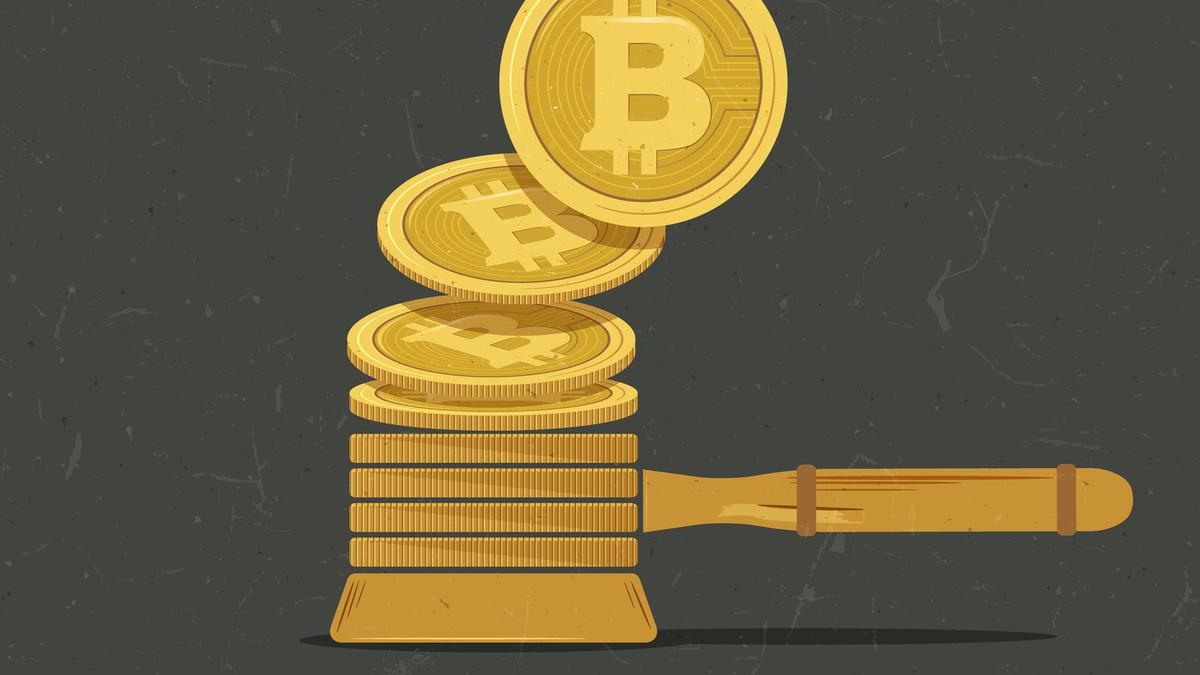News Highlight
The European Parliament’s Markets in Crypto-Assets (MiCA) law is the first detailed regulation for cryptos.
Key Takeaway
- The European Parliament is the legislative body of the European Union’s 27 member states.
- It has adopted the world’s first complete set of rules to put mostly unregulated cryptocurrency marketplaces under government oversight.
- The Markets in Crypto Assets (MiCA) regulation will go into effect after formal approval by member states.
Markets in Crypto-Assets (MiCA) Law
- About
- The MiCA law addresses issues such as money laundering, consumer and investor protection, crypto business responsibility, stablecoins, and the environmental impact of crypto mining.
- It would govern the “wild west” of crypto assets and provide legal clarity to those who issue them.
- They maintain high standards for both investors and consumers.
- It also excludes non-fungible tokens.
- However, the EU may issue horizontal legislation for NFTs following a separate examination in 18 months.
Key Provisions of Crypto-Assets (MiCA) Law
- Liquidity
- According to the MiCA, stablecoin issuers must retain minimum liquidity to meet any unexpectedly significant consumer withdrawals.
- The reserves would also need to be protected from insolvency.
- Regulation
- The European Banking Authority (EBA) currently regulates stablecoins.
- Stablecoin issuers are obligated by law to provide free claims disclosures to investors.
- Transaction limit
- The use of big coins as a form of payment will also be subject to a daily transaction limit of €200 million.
- Money Laundering
- MiCA requires the EBA to maintain a public list of Crypto Asset Service Providers (CASPs) who are not compliant.
- For CASPs based in countries assessed to be at high risk of money laundering.
- Additional checks will be required in compliance with the EU Anti-Money-Laundering (AML) framework for states that are “non-cooperative” for EU tax reasons.
- Environment
- MiCA requires cryptocurrency companies to declare their environmental and climatic footprints.
- The European Securities and Markets Authority will develop technical and regulatory requirements for such data’s presentation, content, and methodology.
Significance of the regulation
- According to Chainalysis, central, northern, and western Europe accounted for approximately 22% of the worldwide crypto business.
- They obtained crypto assets worth $1.3 trillion.
- Having a comprehensive framework, such as MiCA, for 27 European countries not only harmonises the crypto business.
- They also provide the EU with a competitive advantage in terms of growth when compared to the United States or the United Kingdom, which lack regulatory clarity.
- More importantly, 2022 witnessed some of the most significant failures and wipeouts in the crypto business, including bankruptcies and fraud scandals.
- It is the failure of the cryptocurrency exchange FTX and its conflict with Binance.
- As well as the failure of the Terra LUNA cryptocurrency and its accompanying stablecoin.
- Due to the lack of liquidity induced by these shocks, additional crypto-lending businesses halted customer transfers and withdrawals before declaring insolvency.
The new rules imposed by MiCA
- MiCA will enforce compliance on crypto asset issuers, described as “any legal person who offers to the public any type of crypto asset.”
- It will be applied to crypto-asset service providers (CASPs) who provide one or more of these services;
- The operation of a trading platform like CoinBase, custody and administration of crypto-assets on behalf of third parties (customers).
- The exchange of crypto-assets for funds/other crypto-assets.
- The execution of orders for crypto-assets.
- The placing of crypto-assets.
- Providing transfer services for crypto-assets to third parties.
- Providing advice on crypto-assets and crypto-portfolio management.
- Depending on the type of crypto asset, the rule stipulates distinct sets of standards for CASPs.
- The base regime will require every CASP to register as a legal entity in the EU.
- They can obtain authorisation in any 27 member nations and then provide services in all of them.
- Regulators such as the European Banking Authority and the European Securities and Markets Authority will oversee them.
- They will guarantee that the companies have the necessary risk management and corporate governance practices.
- CASPs must demonstrate their stability, soundness, and ability to keep fund users safe.
- In addition, they must set controls to guarantee that they are not participating in proprietary trading, avoid conflicts of interest, and fight against market abuse and manipulation.
Will it affect Indian regulations?
- India’s crypto rules appear to be on hold for the time being.
- According to industry leaders and analysts, the government and industry are more concerned with taxation.
- From April, India imposed a 30% tax on revenue derived from cryptocurrency transfers, and from July 1 2022, it added a 1% tax deduction at source.
- This and the overall bad market have reduced trading volumes and revenue for cryptocurrency exchanges.
- Before making any definitive judgements, Indian regulators are anticipated to review guidelines being established in the United States.

Conclusion
- Stablecoins are cryptocurrencies whose value is linked to another cryptocurrency, fiat currency, or exchange-traded commodity.
- The benefits of asset-backed cryptocurrencies include stabilising the coins by assets that change outside the cryptocurrency ecosystem.
- As well as the fact that the underlying asset is not correlated, reducing financial risk.
- Bitcoin and altcoins are highly connected, making it impossible for cryptocurrency investors to profit from broad price declines without abandoning the market or investing in asset-backed stablecoins.
Pic Courtesy: The Hindu
Content Source: The Hindu



